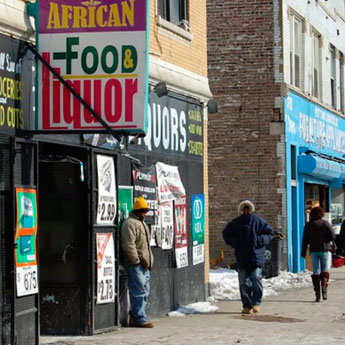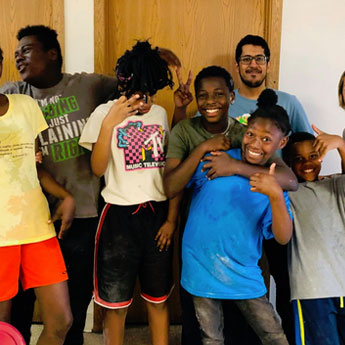
Is SNAP Helping the Homeless?
Is SNAP Helping the Homeless?

One would think that a “quick as a snap” solution to the link between poverty and obesity would simply entail providing low-income people funds for food, as they would be able to afford healthier foods and thus curb any malnutrition in these populations. Unfortunately, data shows that it is not this simple. Let’s look at the history of SNAP, otherwise known as the Supplemental Nutrition Assistance Program. Formerly known as the Food Stamp Program, SNAP is a federal program that provides food-purchasing assistance for low- and no-income people. SNAP benefits supplied roughly 40 million Americans in 2018, with approximately 16.7% of all children living in households with SNAP benefits?. The program was launched in 1964 after a three-year pilot program, but it did not go nationwide until 1974. Interestingly, government data also shows that the same year that the program went nationwide, America’s obesity rates began to rise sharply. Government data show the typical American family on food stamps receives about $500 per month to spend on food, and as much as $771. Although these funds may sound like the perfect solution to malnutrition in low-income citizens, it’s also been found that people on food stamps purchase soda (#1) and bag snacks (#4) at higher rates than non-SNAP households. Even with greater funds, it’s been found that SNAP households are still not purchasing healthy foods, even if they are the cheaper ones like eggs, beans, rice, and bananas, to name a few. It seems more likely that most welfare recipients choose to eat unhealthy food because there is not much prep work required, it tastes good, it is designed to be addictive, and they have the resources to buy large quantities of it thanks to their monthly government benefit?. SNAP thus is not offering a healthy solution to malnutrition.
SNAP also faces criticism as it differentially benefits its benefit holders based on their race: white SNAP participants tend to have better diets and are less likely to be overweight. This may be because Hispanic and African American SNAP participants are more likely to live in areas where not only is healthy food scarce, but they are not being educated as much on how to make healthy food choices. With their SNAP benefits in hand, food-insecure white people could finally go and buy fruit and vegetables from their neighborhood stores as they are readily available to them and they are likely more educated.
For the homeless, SNAP presents an especially unique issue. A common myth is that food stamps are easily accessible to people who are homeless and many homeless people take advantage of this program. Over half of the homeless population does not receive food stamps. Lack of transportation, lack of knowledge about the program, mental illness, lack of an address, and lack of documentation are some of the common barriers that prevent homeless people from receiving food stamps?.
Thus, although SNAP has good intentions, it is not solving the obesity epidemic and may in fact be partially contributing to it as long as we continue to not educate families and their children on how to make healthy food choices?. Especially considering our homeless demographic, we cannot rely on programs like SNAP to not provide the homeless with not only enough food but also nutritious food.
“A Short History of Snap.” A Short History of SNAP | Food and Nutrition Service, 11 Sept. 2018,https://www.fns.usda.gov/snap/short-history-snap
xKhazan, Olga. “How to Fix the Food Stamp Program Without Cutting It.” The Atlantic, Atlantic Media Company, 24 May 2017,https://www.theatlantic.com/health/archive/2017/05/the-messy-relationship-between-food-stamps-and-health/527820/
xSNAP also faces criticism as it differentially benefits its benefit holders based on their race: white SNAP participants tend to have better diets and are less likely to be overweight. This may be because Hispanic and African American SNAP participants are more likely to live in areas where not only is healthy food scarce, but they are not being educated as much on how to make healthy food choices. With their SNAP benefits in hand, food-insecure white people could finally go and buy fruit and vegetables from their neighborhood stores as they are readily available to them and they are likely more educated.
For the homeless, SNAP presents an especially unique issue. A common myth is that food stamps are easily accessible to people who are homeless and many homeless people take advantage of this program. Over half of the homeless population does not receive food stamps. Lack of transportation, lack of knowledge about the program, mental illness, lack of an address, and lack of documentation are some of the common barriers that prevent homeless people from receiving food stamps?
“Food Sharing.” National Coalition for the Homeless,https://www.nationalhomeless.org/publications/foodsharing/intro.html
xThus, although SNAP has good intentions, it is not solving the obesity epidemic and may in fact be partially contributing to it as long as we continue to not educate families and their children on how to make healthy food choices?
Khazan, Olga. “How to Fix the Food Stamp Program Without Cutting It.” The Atlantic, Atlantic Media Company, 24 May 2017,https://www.theatlantic.com/health/archive/2017/05/the-messy-relationship-between-food-stamps-and-health/527820/
x
The Demographics We Serve
Women and Children in Homeless Shelters of Chicago underserved and food insecure communities
Learn More
The Link Between Childhood Obesity and Poverty
Learn More
Where Pineapple Way Steps In
Learn MoreLet’s bring the taste of home to homeless children!
Sponsor a surprise box
Click Here
X
 Get New Password
Get New Password
Make a Donation
Help us fight obesity at its source and give our future generations the skills for a healthy lifetime.Your donation will help us to broaden the horizon of kids who have not been exposed to the joys and benefits of healthy eating.
Payment
Information
Information
Fill in all the fields for a secure donation
Title
Thank you!
Lost Password
Please enter your email address. You will receive an email message with instructions on how to reset your password. Get New Password
Get New Password

